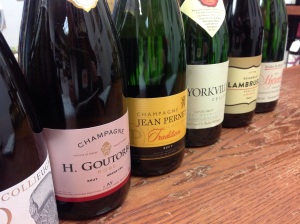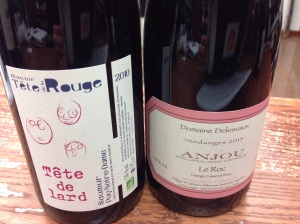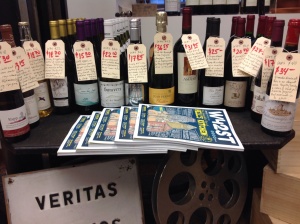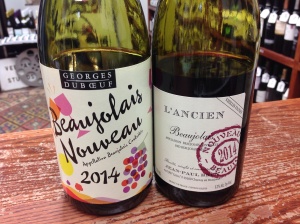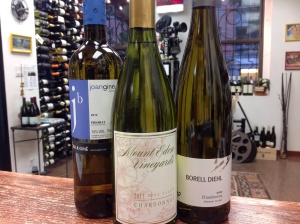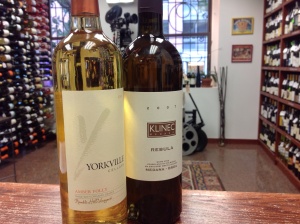Tags
Blended Wines, Domaine de Veilloux, french wine, Loire Valley Wines, Olivier Pithon, Roussillon Wines
Domaine de Veilloux Blanc, 2009 – Was $19. Now $14.25
Domaine Olivier Pithon, Cuvee Lais, 2009 – Was $28. Now $21
This week – two wines – from regions where blending is mandated. From Cheverny in Loire, Domaine de Veilloux Blanc 2009. A blend of Sauvignon Blanc and Chardonnay, this wine is made for the long haul. The Domaine is managed according to natural principles (certified organic in France) and it’s history reaches back to the 1700s. Smack dab in the middle of Loire, the white wines of Cheverny are distinctive from other wines from Loire in that they don’t possess that sometimes searing minerality and acdity of Muscadet, Sancerre and Quincy. Instead, these wines are richer and weightier. Complex nose of grass, green apple are followed by honeycomb, lemon curd, hard candy and melon. This comes from both the differences in geology, but also from the fact that these wines are often aged in bottle for some time before release. Perfect with game, veal, dishes with mushrooms, herbs and cream.
From Domaine Olivier Pithon in Cotes de Roussillon comes his Cuvee Lais, 2009 – the youngest of Olivier’s red wines. Here, it is mandated that wines possess a minimum of three grapes. This wine is composed of Grenache, Syrah and Carignan. Brother of Jo Pithon, Olivier founded his Domaine in 2001 using biodynamic principles for all of his wines. The terrain in Roussillon is rugged, but the wines reflect some of that. The Cuvee Lais, named after the family cow, is dark, brooding and rich. Dense and aromatic. Very dark to the eye – this wine shows blackberry and italian plum on the nose, and dried cherry, bacon, tar and eucalyptus on the palate. Very extracted and a mirror of the local terrain. A big, big wine deserving of a nice roast full of herbs and char. A real brut! Both of these wines are unique and delicious.


